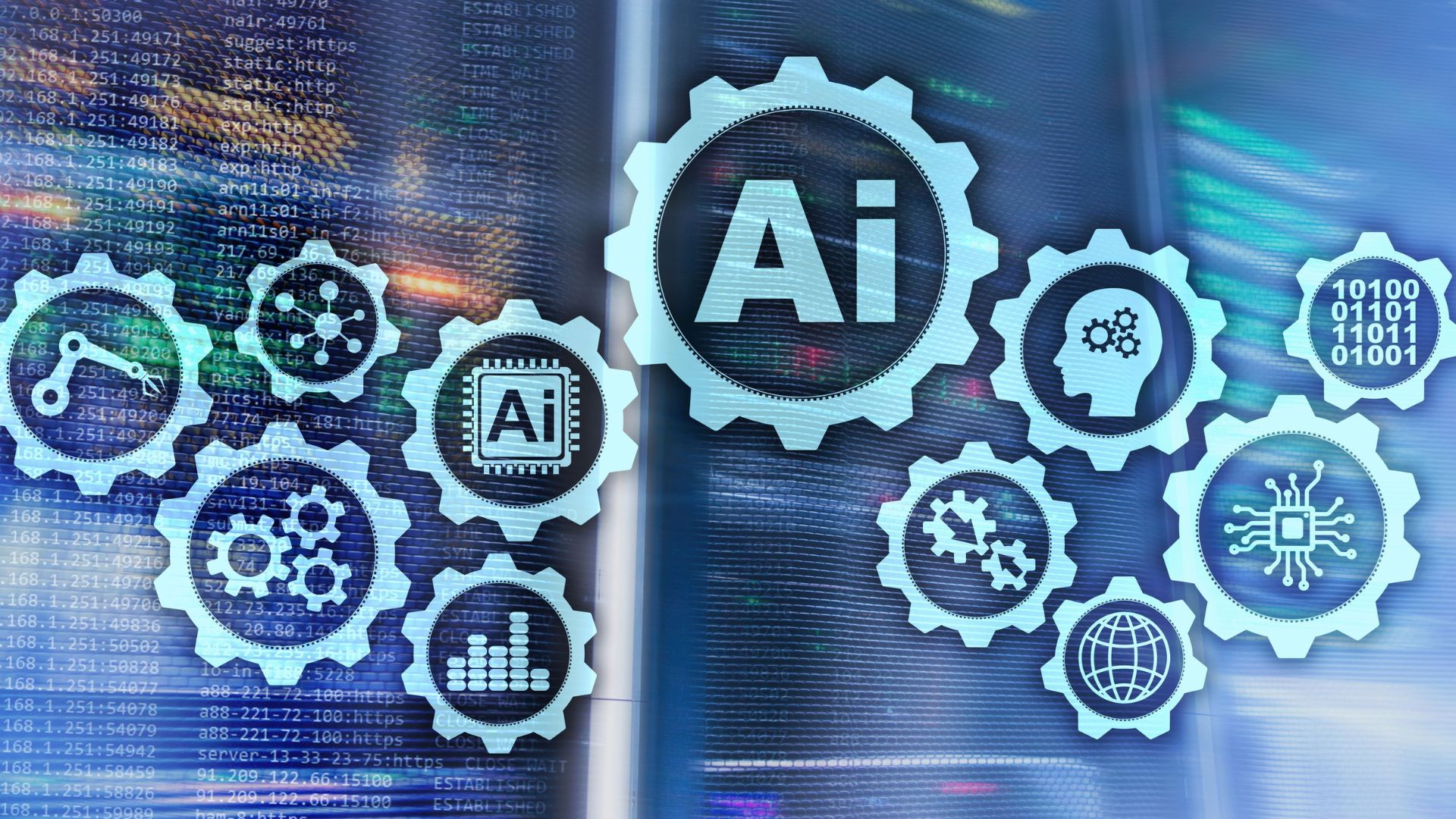Artificial Intelligence is Surpassing Human Capabilities Faster Than Anticipated
Artificial Intelligence (AI) is reshaping our world at an unprecedented rate. What was once considered science fiction is now becoming reality, with AI systems performing tasks that were previously thought to require human intelligence. The rapid advancement of AI technology is transforming industries, job markets, and even the nature of work itself. In this blog, we will explore how AI is taking over human tasks faster than anticipated, the impact on various industries, the implications for the workforce, and what the future holds for AI and human collaboration.
The Accelerating Pace of AI Integration
Artificial Intelligence journey from theory to practice has been remarkably swift. Historically, technological advancements followed a relatively predictable trajectory, with incremental changes occurring over time. However, AI’s progression is characterized by exponential growth. Machine learning, natural language processing, and robotics have advanced to the point where AI systems can now execute complex tasks with increasing efficiency.
According to a CNN report, the integration of AI into various sectors is happening faster than many experts had predicted. For example, AI-driven chatbots and virtual assistants are now commonplace in customer service. These systems can handle a wide range of tasks, from answering queries to resolving complaints, often surpassing human agents in terms of response time and availability. Similarly, AI-powered robots are performing intricate tasks in manufacturing, such as quality control and assembly, that were once solely the domain of human workers.
Industries Transformed by AI
Several industries are experiencing profound changes due to AI:
Customer Service
The customer service industry has been significantly transformed by Artificial Intelligence technologies. Chatbots and virtual assistants are now capable of handling routine inquiries, providing support, and even making personalized recommendations. These systems use natural language processing to understand and respond to customer needs, improving efficiency and reducing the need for human intervention. AI’s ability to analyze large volumes of data allows these systems to learn from interactions and continuously improve their performance.
Finance
The financial sector has seen a major shift due to AI. AI algorithms are being used for various applications, including fraud detection, algorithmic trading, and financial advising. These systems can analyze vast amounts of data to identify anomalies, predict market trends, and make informed investment decisions. For instance, AI-powered trading platforms can execute trades at lightning speed, optimizing investment strategies and enhancing financial performance.
Healthcare
AI’s impact on healthcare is profound. From diagnostic tools to robotic surgery, AI is revolutionizing the medical field. AI algorithms can analyze medical images, such as X-rays and MRIs, to identify conditions like tumors or fractures with high accuracy. In surgical procedures, robotic systems equipped with AI can assist surgeons with precision, reducing the risk of human error and improving patient outcomes. AI’s role in healthcare extends to personalized medicine, where algorithms analyze genetic data to tailor treatments to individual patients.
Retail
The retail industry has embraced Artificial Intelligence to enhance customer experiences and streamline operations. AI is used for inventory management, supply chain optimization, and personalized shopping experiences. AI-driven recommendation systems analyze customer preferences and purchasing behavior to provide tailored product suggestions, improving sales and customer satisfaction.
Transportation
Autonomous vehicles are one of the most visible examples of AI’s impact on transportation. Companies are developing self-driving cars that use AI to navigate roads, detect obstacles, and make real-time decisions. AI is also used in logistics to optimize route planning, reduce delivery times, and improve overall efficiency in supply chain management.
The Workforce Impact
As AI continues to advance, its impact on the workforce is becoming increasingly apparent. The integration of AI technologies has led to both job displacement and the creation of new job opportunities. The key challenge is managing this transition and ensuring that workers are prepared for the changes ahead.
Job Displacement
AI’s ability to perform routine and repetitive tasks means that certain jobs are at risk of being automated. Roles in administrative support, data entry, and certain manual labor positions are particularly vulnerable. For example, AI-powered systems can handle tasks such as scheduling, document management, and even basic decision-making, reducing the need for human workers in these areas. The impact of automation on jobs is a significant concern, as it can lead to job losses and economic disruption.
Job Creation
While AI may displace certain jobs, it also creates new opportunities. As AI systems become more sophisticated, there is a growing demand for professionals who can develop, manage, and maintain these technologies. Jobs in Artificial Intelligence research, data science, machine learning engineering, and AI ethics are on the rise. Additionally, AI is driving innovation in various fields, leading to the emergence of new industries and job categories.
Skills and Training
To thrive in an AI-driven world, workers need to acquire new skills and adapt to changing job requirements. Skills such as data analysis, AI programming, and machine learning are increasingly valuable. Educational institutions and businesses must invest in training programs that equip workers with the skills needed to work alongside AI systems. Lifelong learning and continuous skill development will be crucial for staying relevant in the evolving job market.
Human-AI Collaboration
Rather than viewing AI as a replacement for human workers, it is more productive to see it as a tool that enhances human capabilities. The Harvard Business Review suggests that while Artificial Intelligence may automate certain tasks, humans with AI skills will have a competitive advantage. Collaboration between humans and AI can lead to greater efficiency, innovation, and improved decision-making.
Preparing for the AI-Driven Future
As AI continues to evolve, individuals and organizations must be proactive in preparing for the changes ahead. Here are some strategies to navigate the AI-driven future:
- Embrace AI as a Tool: Organizations should view AI as a tool for enhancing productivity rather than a threat to jobs. By integrating AI into their operations, businesses can gain a competitive edge, drive innovation, and improve efficiency. AI can handle repetitive tasks, allowing human workers to focus on more complex and creative aspects of their roles.
- Invest in Skill Development: Workers should focus on acquiring skills that complement AI rather than compete with it. Skills such as data analysis, AI programming, and emotional intelligence are increasingly valuable. Educational institutions and businesses should offer training programs that prepare individuals for the AI-driven job market.
- Promote Lifelong Learning: The rapid pace of technological change means that workers must engage in lifelong learning to stay relevant. Continuous skill development and adaptation are essential for thriving in an AI-driven world. Individuals should seek opportunities for professional development and stay informed about emerging trends in AI and technology.
- Develop Ethical Guidelines: As AI becomes more integrated into various aspects of life, ethical considerations become increasingly important. Policymakers, technologists, and businesses must work together to develop guidelines for the responsible use of AI. Issues such as data privacy, algorithmic bias, and transparency in AI decision-making need to be addressed to ensure that AI is used ethically and equitably.
Ethical and Social Implications
The rise of AI brings with it a range of ethical and social implications that must be carefully considered. As AI systems become more capable and pervasive, it is crucial to address the following concerns:
- Data Privacy: Artificial Intelligence systems often rely on large datasets to function effectively. It is essential to ensure that personal data is handled responsibly and that individuals’ privacy rights are protected. Data governance practices should be implemented to safeguard sensitive information and prevent misuse.
- Algorithmic Bias: AI algorithms can unintentionally perpetuate biases present in the data they are trained on. Efforts must be made to identify and mitigate biases in AI systems to ensure fair and equitable treatment for all individuals.
- Job Displacement and Economic Impact: The potential for job displacement due to AI automation raises concerns about economic disruption and income inequality. Policymakers should consider measures to support displaced workers, such as job retraining programs and social safety nets. Addressing the economic impact of AI is crucial for ensuring a smooth transition to an AI-driven economy.
- Human-AI Interaction: As AI systems become more integrated into daily life, understanding how humans interact with these technologies is important. Ensuring that AI systems are designed with user experience in mind can enhance their effectiveness and acceptance. Additionally, fostering collaboration between humans and AI can lead to better outcomes and improved decision-making.
Future Predictions
As technology continues to advance, AI’s role in various aspects of life is expected to grow even further. Some predictions for future of AI:
- Increased Automation: AI is likely to take on more complex tasks beyond routine and repetitive functions. This includes areas such as creative work, strategic decision-making, and even complex problem-solving. As AI systems become more sophisticated, their capabilities will expand, leading to new applications and opportunities.
- AI in Everyday Life: AI will become increasingly embedded in everyday life, from smart home devices to personalized recommendations. The integration of AI into daily activities will enhance convenience and efficiency, transforming how we live and work.
- Collaboration Between Humans and AI: The future will see greater collaboration between humans and AI. Rather than replacing humans, AI will augment human capabilities, leading to new ways of working and problem-solving.
- Ethical and Regulatory Developments: As AI technology evolves, ethical and regulatory frameworks will continue to develop. Policymakers will need to address issues related to data privacy, algorithmic bias, and the impact of AI on employment. Ensuring that AI is used responsibly and ethically will be crucial for its long-term success.
Conclusion
AI is taking over human tasks faster than many anticipated, transforming industries, job markets, and the nature of work itself. While AI has the potential to displace certain jobs, it also creates new opportunities for innovation and growth. By embracing AI as a tool, investing in skill development, and addressing ethical considerations, we can navigate the AI-driven future and harness its potential to benefit society.
As we move forward, it is essential to stay informed, adaptable, and proactive in preparing for the changes that AI will bring. The pace of technological advancement may seem daunting, but with careful planning and a focus on collaboration between humans and machines, we can shape a future where AI enhances rather than replaces human capabilities. The journey ahead is both exciting and uncertain, but by embracing the possibilities of AI, we can create a world where technology and humanity thrive together.




